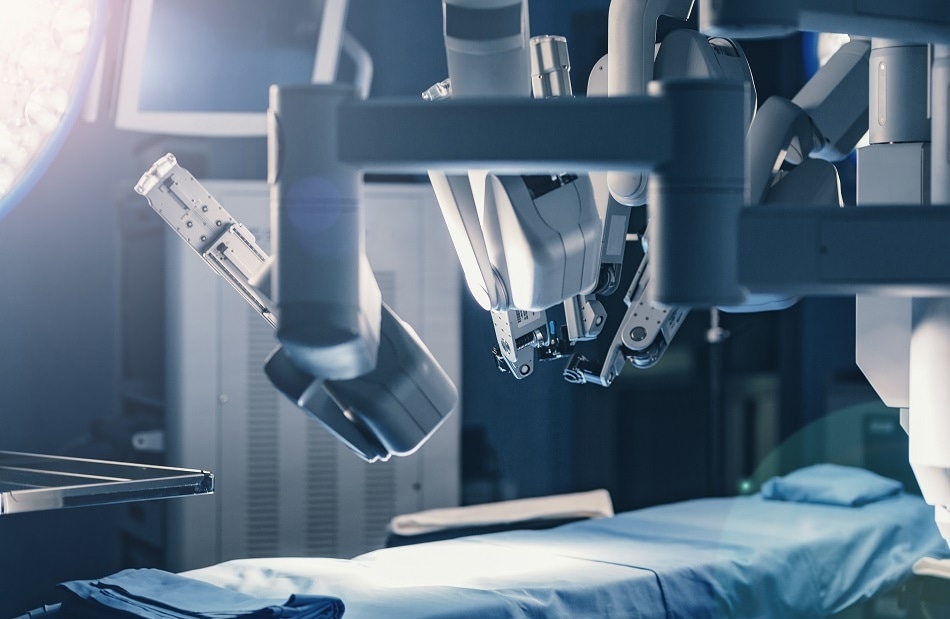
By Mad Vertise
Robotics are impacting many areas of our lives. Given that medical procedures require the utmost precision, it has taken a lot longer for robotics to be deemed safe in the medical industry. Nowadays, robotics is impacting many different areas, and in this article, we look at some of the key areas where robotics are, and could be used in the future.
There are many ethical questions as to why a robot should or shouldn’t perform medical diagnostics, or even surgical procedures. However, as healthcare gets more expensive in some parts of the world, or is underfunded in others, the shortfall (be it staff or money) could be gained through advanced robotic and AI systems that could take care of many routine medical procedures.
Surgery
Surgery is one of the most precise procedures within the medical field, and often requires years of practice and a steady hand to ensure that no complications (which can be fatal) occur during the often-long procedures. So, is it trusting to leave these delicate procedures in the hands of a robot?
Yes, and they already used in some capacity, i.e. where there is a remote human operator. There are often long waiting times for surgical procedures, especially those which are complex, not an emergency or are rare. Even routine surgical procedures can have waiting times of up to a year.
Whilst the robots used are not autonomous in any aspect, they enable the surgeon to perform precise and delicate procedures at a much quicker rate and higher accuracy (and precision) because the robot has a much greater flexibility to perform small incisions.
The use of such robots helps in reducing surgery time and potential complications. To date, they have been used on many surgical procedures ranging from head and neck to urologic surgery.
Nursing
Whilst nursing and the procedures that nurses perform are not high risk, they are often fundamental in the determination of a patient’s ailment. These processes range from general triage, to taking blood, administering vaccines or painkillers and checking a patient’s wellbeing/hygiene. Whilst it may seem routine to many people, it is a time-consuming and energy draining job, especially in emergency units, and some of the procedures (such as taking blood) can be painful if they are not done right.
So, regardless of the procedure, concentration is paramount even under stressful situations. Robotics can help with many of the basic and repetitive tasks, such as administering painkillers and taking blood, which could lessen the burden on nurses and enable them to carry out the human aspect of the job more efficiently.
Robotic Assistants
Robotic assistants cross-over with the nursing aspect (and is a kind of extension on the nursing front), however, they can be used for more human-like tasks and not just routine procedures. There are many autonomous robot assistants in use today.
These robots can be used to check up on patients, provide patients with some company and provide palliative care. If robots can be employed to undertake these basic, yet time-consuming, tasks then it frees up more time for nurses to undertake other tasks, thus, ensuring higher efficiencies.
Hospital Cleaning
Ensuring that a hospital is kept sterile is paramount to making sure that bacteria and diseases don’t spread and infect patients, medical staff and visitors. There have been numerous outbreaks of MRSA and flu variations within hospitals, so minimizing their spread through efficient hygiene options is a key challenge.
Robots have been created that emit high intensity ultraviolet light that quickly kills any bacteria and disinfects an area much quicker than a human can. The cost is also lower in the long-term than employing multiple humans.
Pharmaceutical Dispensing
It takes a lot of effort and time for pharmacies to organize drugs and dispense them to patients. There are many different types of vending machine throughout the world that are much faster and more efficient than humans, and the same could be applied for dispensing pharmaceuticals.
Robots can process information and provide a response much quicker than humans can and this could lead to fewer queues and a more efficient dispensing process. It is thought that these dispensers could work in a similar way to ATMs, where identification is required; so that not only are the patients getting the correct drugs, they can be accessed at any time of day.
Medical Supply Chain
Robots are built to be resilient and robust and can undertake tasks that are deemed unsafe or dangerous for a human. The most obvious area is in the testing of chemical protection clothing. Should a human be wearing any of the clothing and they have defects, there are some nasty chemicals out there that can cause either physical damage on long-term health problems. Robots have no such risk towards either of these so can be used to test an array of dangerous substances. Additionally, robots in the long-term will also be cheaper than paying human testers and robots can be used for continuous testing, unlike humans.
Sources:
IT ProPortal: https://www.itproportal.com/features/the-future-of-medical-robotics/
Medical Futurist: https://medicalfuturist.com/
Singularity Hub: https://singularityhub.com/2016/10/11/the-future-of-surgery-is-robotic-data-driven-and-artificially-intelligent/#sm.0001xmku41wu1dxgyvm1xg95dxywc
Disclaimer: The views expressed here are those of the author expressed in their private capacity and do not necessarily represent the views of AZoM.com Limited T/A AZoNetwork the owner and operator of this website. This disclaimer forms part of the Terms and conditions of use of this website.